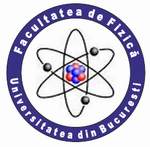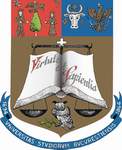| |
 |
UNIVERSITY OF BUCHAREST
FACULTY OF PHYSICS Guest
2025-10-05 22:27 |
 |
|
|
|
Conference: Bucharest University Faculty of Physics 2025 Meeting
Section: Physics and Technology of Renewable and Alternative Energy Sources
Title:
Visualizing Heat: A 3D Simulation Approach to Understanding Thermal Conductivity in Solid Bodies
Authors:
Felicia Ivona SCARLAT, Adriana Elena BĂLAN
Affiliation:
University of Bucharest, Faculty of Physics, 405 Atomiștilor str., PO Box MG-38, Bucharest-Măgurele, Romania
E-mail
scarlatfeliciaivona@gmail.com
Keywords:
thermal conductivity, heat transfer, interactive educational module
Abstract:
This study focuses on the design and development of an interactive educational module focused on the principles of heat transfer in solid bodies, with particular emphasis on enhancing students’ conceptual understanding and computational proficiency in determining thermal conductivity. The module utilizes a virtual 3D simulation environment to create an engaging and exploratory learning experience for students in physics and engineering education.
The simulation framework integrates FreeCAD for parametric modelling and mathematical analysis, enabling users to construct geometries, assign material properties, and simulate steady-state heat conduction scenarios based on Fourier’s law. For post-processing and visualization, ParaView is employed to render detailed thermal distributions and heat flux vectors, providing students with a clear, intuitive representation of heat flow through solid materials.
The module is grounded in constructivist educational principles, encouraging learners to interact with physical models, manipulate variables, and observe outcomes in real time. Through a series of guided tasks and open-ended explorations, students gain hands-on experience in interpreting simulation data and calculating thermal conductivity from simulated experimental conditions.
By combining open-source tools with a targeted instructional design, this educational module offers an accessible and effective approach to teaching complex thermal physics concepts in a virtual environment.
|
|
|
|